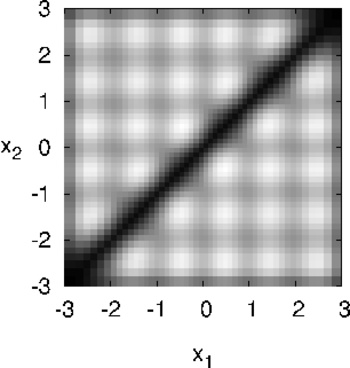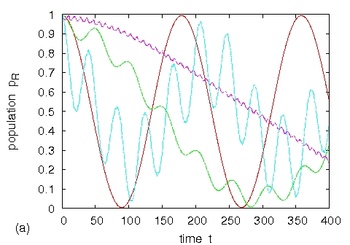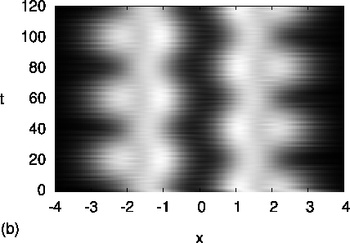Finite Bosonic Systems in Traps
Introduction
Ultracold atoms represent an ultimate toolbox to study fundamental quantum processes in physics with potential applications to technology (e.g. sensoring, quantum information processing). Design of the external trapping geometries and control of the interparticle interactions are possible with high precision using appropriately designed electric (laser) and magnetic fields. Highlights of the experimental observations that followed the observation of Bose-Einstein Condensate, include phase transitions, coherence, interference and entanglement effects, dynamical processes such as the Josephson effect, Landau-Zener decay, pair-tunneling and self-trapping. Theoretical studies of many-body systems rely mostly on a priori approximations of the exact Hamiltonian for example by using mean-field theory and in particular the Gross-Pitaeevskii equation or Bose-Hubbard model for lattices. Although these studies recapture many important effects, thrilling physics appears if one examines in detail the mutual correlations between the particles using numerical ab-initio approaches.
Our research and visions
Our research focuses on finite bosonic systems in low-dimensional (1D versus 2D) geometries amenable for exact calculations covering the pathway from weak to strong interactions. When bosons are trapped in e.g. elongated 1D tubes the transversal degrees of freedom are freezed out. Then, apart from the commonly used Feshbach resonances, the confinement offers an additional tool to control the interparticle forces possibly approaching very high strengths. An exquisite effect of 1D physics is the Tonks-Girardeau gas, of infinitely repulsive bosons which acquire characteristics of non-interacting fermions (fermionisation), as the hard-core repulsion mimics the Pauli principle. The exact treatment of the static properties for several 1D traps (harmonic oscillator, double well, lattices) covers interaction coupling from low to very high values up to fermionisation. We observe the effects of the interparticle forces and external geometry on variations in the reduced density matrices, correlations between the particles, momentum distributions and several other quantities. Our investigations include repulsive and attractive regime, single species as well as mixture ensembles. Tunneling dynamics and mechanisms are examined for different strengths of interactions giving insight from a few body perspective to many-particle effects such as self-trapping and pair-tunneling. Apart from the prototype system of the double well, our current research includes finite optical lattices, asymmetric geometries as well as inhomogeneous interactions, and material barriers realized by heavy atoms in a mixture systems.
In our group the powerful method going by the name Multi-Configurational Time-dependent Hartree (MCTDH) is applied to explore ultracold bosons in mesoscopic environments. Both stationary properties as well as the quantum dynamics are equally accessible with this approach. It allows to cover the complete regime from weak to strongly interacting systems. The efficiency of this wave-packet dynamical method offers us also the possibility to study explicitly time-dependent setups like driven lattices and barriers.
Appetizers



